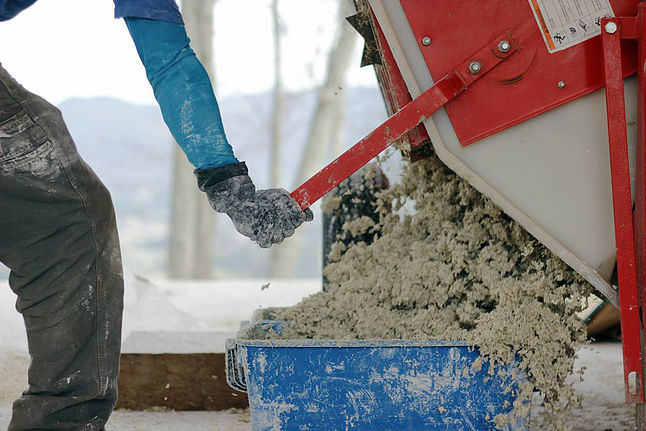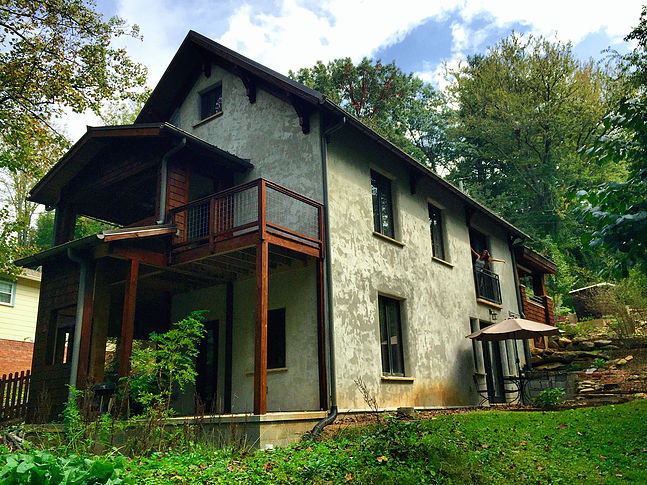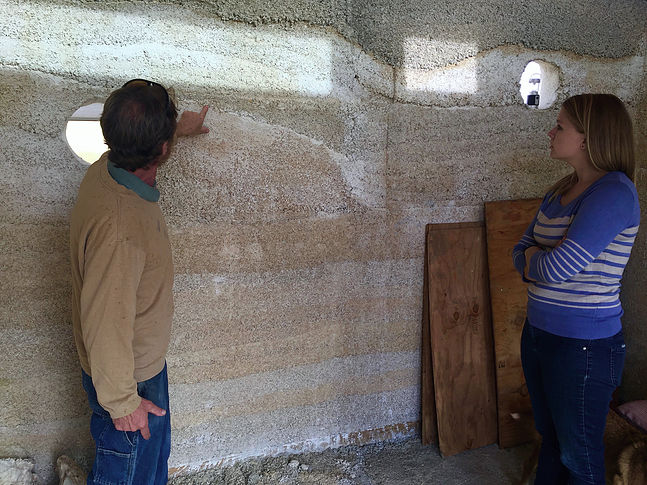
Between the manufacture of building materials, transportation of those materials and construction equipment, energy use and worker transportation, along with the final disposal of construction waste, the United States building sector is becoming one of the world’s largest threats to climate change.
Did you know?
-
Half of the world’s energy goes into buildings throughout their lifetime – from construction, through use, and finally demolition.
-
Buildings, and the construction and use of those buildings, also contribute to almost half of the world’s carbon dioxide emissions.
-
Transporting the materials to a building site constitutes 6-8% of total greenhouse gas emissions for a project.
-
Construction is one of the largest consumers of raw materials, using 25 percent of the world’s timber.
-
The manufacture of concrete and reinforced steel account for 94-95% of greenhouse gas emissions for construction materials.
The U.S. Green Building Council reports that not only does the United States commercial and residential building sector consume 70 percent of electricity, but accounts for 39 percent of all CO2 emissions produced. In fact, U.S. buildings alone are said to be responsible for more carbon emissions annually than those of any other country, except China.
Hempcrete is made of the inner woody core of the hemp plant (called shiv or hurd) mixed with a lime-based binder and water. It is environmentally friendly, non-toxic, energy-efficient and resistant to fires, mold and insects.
Hempcrete, and other hemp building materials, have the ability to transform the building sector into a more energy-efficient and climate-friendly industry, playing a major role in reducing our ecological footprint. Here’s how.
Manufacturing
The manufacture of concrete and reinforced steel accounts for 94-95 percent of greenhouse gas emissions produced from construction materials. These materials are often made using poisonous chemicals and continue to release toxins into the environment even after the buildings are constructed.
Contrary to these traditional construction materials, hemp is typically a low-maintenance, fast-growing agricultural crop that thrives in both temperate and tropical climates. While it grows, it absorbs carbon emissions and helps replenish the soil with nutrients. Once mature, it can be harvested and processed into a concrete-like mixture called hempcrete.
Hemp processing is much less destructive to the environment than traditional concrete production. It requires less energy to produce, and it is a sustainable, annually renewable industrial resource.
HempFlax is a company focused on the production and processing of sustainable resources, semi-finished and finished products made from ecologically grown fibre hemp and flax. They discourage unnecessary logging and deforestation by producing hemp wood for paper, construction material, sawdust and many other environmentally damaging consumer goods.
Transportation
Manufacturing building materials that are then transported to a building site to be constructed into a final structure, all emit large amounts of greenhouse gases and consume increasing quantities of energy. To reduce transportation costs and increase efficiency, hemp is often grown in close vicinity to the production facilities.
On farm processing methods have also been explored in an effort to decrease these costs. Hypothetically, all processing and transportation equipment could run on hemp biodiesel – but that’s down the road.

Pictured above: The Nauhaus Prototype Project, a hempcrete home in Asheville, North Carolina. Click here to learn more about our stay in The Nauhaus!
Construction
Hemp can replace traditional construction materials like concrete, timber, and steel with applications like hempcrete and other hemp-based construction materials like hemp fiberboard and hemp insulation.
Hempcrete is lightweight, non-toxic, and biodegradeable. It is usually mixed on-site, although precast walls and blocks are also available. Building with hempcrete offers design flexibility, because it has the ability to form around any shape, then set and support its own weight.
Energy Usage
A significant amount of emissions come from the combustion of fossil fuels to provide heating, cooling and lighting, and to power appliances and electrical equipment. Hempcrete regulates temperature and humidity; in some cases completely eliminating the need for heating and cooling systems, resulting in noticeable energy savings.
“Hempcrete is used as an environmental barrier for providing resistance to heat transfer and managing moisture of the building envelope,” says Kris J. Dick, an associate professor in the Department of Biosystems Engineering at the University of Manitoba in Winnipeg and director of Alternative Village, its construction research facility. “Engineers and architectural designers practicing in the field of nonconventional material applications have clearly indicated a need for more design data regarding hempcrete.”
As time passes, the strength of hempcrete has shown to increase. The lime-binding agent that is mixed with the hemp hurd calcifies and gets harder over time. The average hempcrete building is expected to last several hundred years.

Pictured above: John Patterson from Tiny Hemp Homes showing Kentucky Hempsters, Kirstin Bohnert, his latest project in Berthoud, Colorado. Click here to learn more about our visit with John and his Tiny Hemp Home in CO!
What to learn more about Hempcrete?
Industry leaders and experts will gather together on April 1-2 in Loveland, Colorado for the NoCo Hemp Expo, the largest hemp-centric event in the country. Join John Patterson and Frank Wetenkamp from Tiny Hemp Homes for a “Building with Hemp” workshop from 1:00 pm – 2:30 pm on April 1 or 12:00 – 1:30 pm on April 2.
Be sure to sign-up for our mailing list for future hempcrete building workshops this season!
—
Sources
Image source (top): https://www.facebook.com/alembicstudio/photos/a.1018396308179468.1073741829.150498734969234/1138901149462316/?type=3&theater
https://helix.northwestern.edu/blog/2011/03/construction-has-costly-carbon-footprint
http://www.huffingtonpost.com/2012/05/10/hempcrete-hemp-house_n_1506662.html
http://www.eesi.org/files/climate.pdfhttp://www.collective-evolution.com/2013/02/03/hempcrete-worlds-strongest-building-material/http://hempflax.com/en/what-is-hemp/hemp-processing
https://www.asme.org/engineering-topics/articles/construction-and-building/green-alternative-to-insulation-materials
http://hempflax.com/



